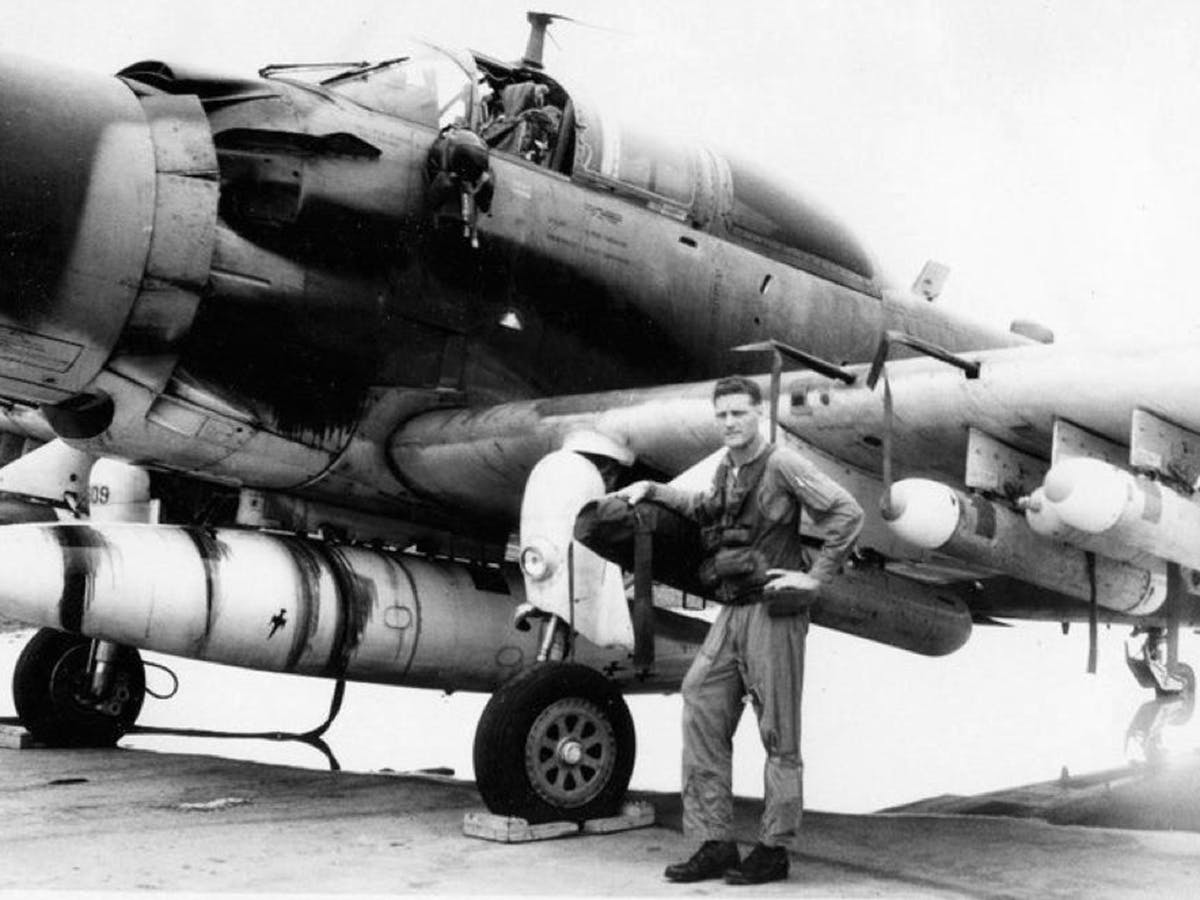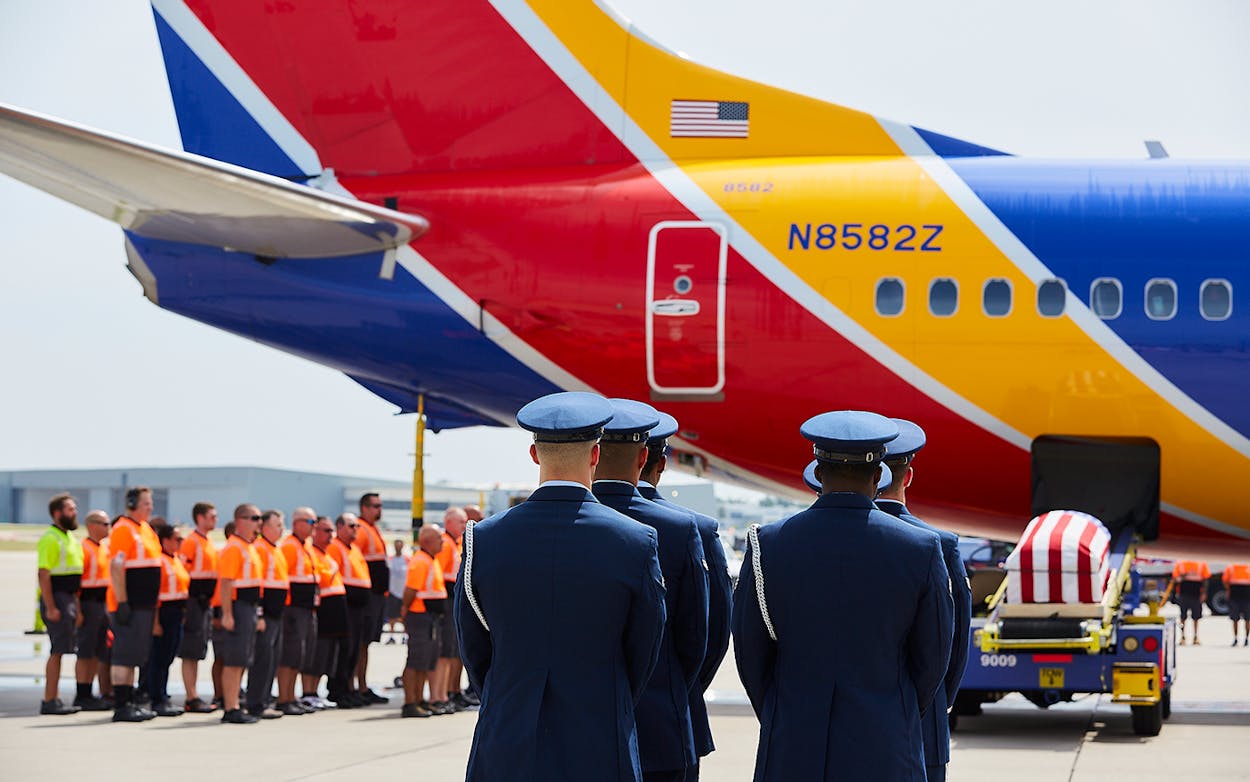For 52 years, Bryan Knight relived the last time he saw his father.
One January morning in 1967, when Bryan was five years old, he visited Dallas’s Love Field for the first time—his father, Roy Knight Jr., was set to report to Udorn Royal Thai Air Force Base, and Bryan and his family were there to see him off. To this day, Bryan remembers the sound of his mother, Patricia, sobbing as his father left.
Several months later, on May 19, 1967, Roy Knight Jr.’s plane was shot down over enemy territory along the Ho Chi Minh Trail in Laos. Afterward, he was declared missing in action. Halfway across the world, in the tiny North Texas town of Millsap, the Knight family’s lives imploded with that dreaded knock at the door. Overnight, their little A-frame house swelled with visitors who prayed and cried for their loss. “Suddenly, my life was destroyed,” Bryan says. “It was never the same again.”
By the end of the Vietnam War, the U.S. listed roughly 2,600 Americans as unaccounted for. Some had been held captive as prisoners of war or were missing in action. Many of them, including Bryan’s father, were airmen shot down over North Vietnam or Laos, in remote areas that made their recovery unlikely. In 1974, without any further information about what happened to him or many of those still missing, the U.S. government officially declared Knight killed in action.
“From the moment we heard he was missing in May [of 1967], our duty as a family was to have hope no matter what we saw or heard,” Bryan says. “When [he was] declared deceased, we couldn’t have that hope anymore, and we had to move on without those answers.”
Roughly 1,059 formerly unaccounted-for Americans have been repatriated and identified since the Vietnam War. Teams from the United States and Vietnam have worked together on excavations to recover and identify remains. Earlier this year, long after Knight’s family had given up hope that they would ever find an answer, a team of researchers finally made headway on finding Roy Knight Jr.
Led by Ally Campo, a Defense POW/MIA Accounting Agency (DPAA) scientific recovery expert, the team relied on witness testimony, archival imagery, and information from a previous excavation in 1994, which uncovered life-support equipment and boot fragments that were used by American airmen during Vietnam. In 2019, while metal detecting near the old site in Laos, the team found several teeth, a dog tag chain, and parts of a helmet. One fragment read “MAJ KNI,” which matched a photo they had of Knight. The team was confident they had found him, but they had to be sure. A forensic odontologist confirmed that the teeth belonged to Roy Knight Jr.
In the years following his father’s death, Bryan had tried to get closer to him. He’d tuck himself inside a closet at home, looking through his dad’s ties and shoes, or burying his face in an old wool shirt—one of the only possessions that still smelled like him. Though it was often too painful for Bryan’s mother to talk about her husband, she would often remark at how similar he was to his father; even their hands were the same.

Bryan’s father was one of seven siblings, all Texans who served in the military. Roy Knight Jr. was so eager to enlist that he joined the Air Force at age seventeen, with a signed letter from his mother. By the time Bryan himself graduated from high school, he wanted to follow in his father’s footsteps. His mother was completely against it. But Knight joined the Reserve Officers’ Training Corps in college, eventually going into pilot training. The first plane he flew was an A-10 Thunderbolt II—a new and improved version of the A-1 Skyraider his father had flown in Vietnam all those years ago.
For years Bryan wore a missing-in-action bracelet with his father’s name, until he finally decided to take it off, attempting to leave his father’s disappearance in the past. “I couldn’t get beyond it until it was solved,” he says. “But I just accepted that it would always be unknown.”
Then, in June, Bryan, now a captain at Southwest Airlines, found out that not only had his father’s remains been identified, but they would be flown back to Dallas. His brother suggested he get involved. So Bryan wrote to his chief pilot, explained his story, and asked if he could be the pilot who flew his father’s remains home to Texas.
For a few minutes on the morning of August 8, 2019, Love Field stood completely still. As Bryan Knight returned to the last place he saw his father alive, he heard someone from air traffic control say: “From one Vietnam vet to another, welcome home.” The Knight men’s plane was greeted by a water salute. Inside, travelers watched from the windows, brushing away tears as the crew unloaded Knight’s flag-draped casket onto the tarmac.
Bryan says he’d felt calm throughout the flight, until turning into the gate in Dallas. “When I saw all of those faces quietly standing, waiting for us, for my dad, it took my breath away,” he says.
Tweets documenting Bryan’s flight home with his father quickly went viral. And though the Knight family finally has the closure they spent decades longing for, he’s used the spotlight to raise awareness for other families who still don’t know what happened to their loved ones.
“If we are asking people to fight for us, if we are sending them into the unknown, then if the worst happens, we cannot forget about them,” he says. “You can never completely accept what happened until you get those answers. We owe it to every single serviceman and woman that’s missing to bring them back.”
- More About:
- Texas History
- Military








